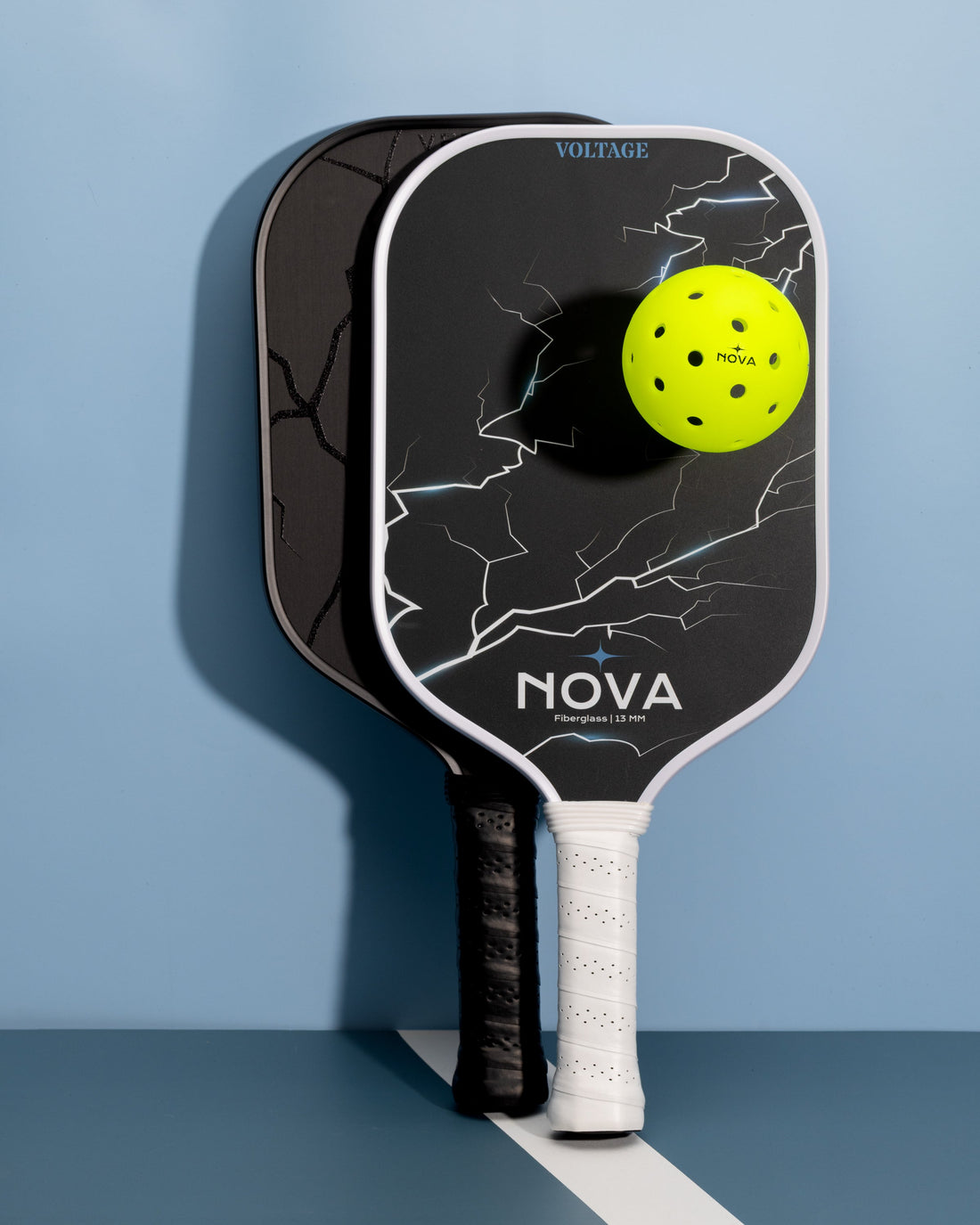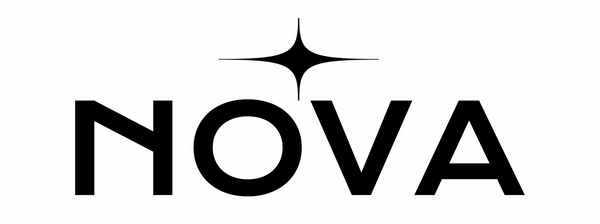Do Paddle Shapes Really Matter in Pickleball? A Complete Breakdown

Share
Over the last year, we’ve noticed more players paying attention to paddle shape and it’s about time. The shape of your paddle isn’t just a cosmetic detail; it plays a major role in how you play and how your paddle performs. From reach and sweet spot size to swing speed and control, shape impacts almost every aspect of your game.
We’ve worked closely with paddle designers and seasoned players to explain what each shape offers, who might benefit most, and how these differences show up on the court.
In this blog, we’ll take a closer look at the most common paddle shapes out there - standard, elongated, wide-body, and a few hybrids. This guide will help you understand why choosing the right shape is more than just a personal preference, it’s a performance move.
Types of Pickleball paddle shapes

1. Standard Pickleball Paddle Shape: Balanced and Versatile
Dimensions: Around 8" wide by 15.5"–16" long
Best for: All-around play, beginners to intermediate players
The standard paddle shape is the go-to option for most players. With a generous sweet spot and balanced weight distribution, this shape offers a blend of power and control that works well in almost every situation. If you’re just starting out or prefer a dependable feel, the standard shape is a safe bet.
2. Elongated Pickleball Paddle Shape: Reach and Power Boost
Dimensions: About 7" wide and 16.5"–17" long
Best for: Advanced players, singles players, power-focused play
Elongated pickleball paddles are longer and narrower than standard ones, giving players extra reach at the net and more power on drives and overheads. However, the smaller width reduces the sweet spot, which means it requires more precision. Great for singles play or aggressive doubles players who like taking shots early.
3. Wide-Body Pickleball Paddle Shape: Forgiveness and Control
Dimensions: Around 8.5" wide, slightly shorter than standard length
Best for: Beginners, defensive players, control-focused players
This paddle shape offers the widest face and largest sweet spot, making it ideal for players who value control over power. The broader surface area increases forgiveness on off-center hits and improves reaction times during fast exchanges at the net.
4. Blade or Thin Pickleball Paddle Shape: Precision and Speed
Dimensions: Narrower and longer, often with thin edges
Best for: Advanced players with strong technique and fast hands
Blade paddles are a niche choice for players who want maximum control, paddle head speed, and a faster reaction time. They are not as forgiving but can be highly effective in the hands of a skilled player who excels in finesse and timing.
5. Hybrid or Custom Shapes: Blending Benefits
Many manufacturers now offer hybrid pickleball paddle shapes, blending elements of elongated and wide-body designs.
For example, Nova Paddles features designs that balance reach and power without sacrificing sweet spot size. These hybrids are increasingly popular among competitive players who want it all.
How to Pick a Pickleball Paddle (Key Factors to consider)
Reach
Elongated paddles give you extra length, which can make a big difference when stretching for wide shots or reacting to fast-paced lobs.
That added reach lets you cover more of the court without overextending or stepping out of position, especially helpful in singles or when you're pulled off balance.
Sweet Spot
Paddles with a wider face tend to have a larger, more forgiving sweet spot. This means cleaner contact more often, even if you don’t hit dead center.
If you're still dialing in your consistency or want a bit more margin for error on fast exchanges, a wider paddle can help reduce mishits and provide a more solid, predictable feel.
Power vs. Control
Slim, elongated paddles generally concentrate more energy behind the ball, making them great for powerful drives and deeper baseline shots.
On the flip side, wider paddles distribute weight differently and offer more surface area, which gives players better control, especially when dinking or placing finesse shots.
Hand Speed
Shorter, more compact paddle shapes naturally move faster through the air. That quicker reaction time makes them ideal for fast hands battles at the net, where speed and precision matter most.
If you're a doubles player who thrives at the kitchen line, paddle shape can give you the edge in quick exchanges.
Pickleball Paddle Measurements & Size Guidelines
Here are pickleball paddle size and pickleball paddle measurements norms to help you compare paddles more intelligently:
|
Feature |
Typical Range / Example |
|
Total paddle length |
About 17 inches (with handle included) |
|
Paddle width |
Around 8 to 8.5 inches for most paddles; longer paddles are narrower |
|
Combined length + width |
Must be 24 inches or less (USAPA / USAP rules) |
|
Handle length |
Regular handles: 4.5 to 5.5 inches; longer handles: over 5.5 inches (good for two-handed shots) |
|
Handle thickness |
Usually between 3 5/8 inches to 4½ inches around (depends on your hand size) |
Which Pickleball Paddle Shape Is Best for You?

Pickleball paddle shape totally depends on your playing style:
If you're just starting out
As a beginner, your focus is on building consistency and learning control. That’s where a wide-body or standard paddle shines. With a larger sweet spot and more surface area, it helps reduce mishits and gives you more confidence as you develop your game. If you’re wondering what the best pickleball paddle for beginners looks like, it’s one that’s forgiving, easy to handle, and helps you keep more shots in play.
This type of paddle gives you the right foundation without overwhelming you with too much power or complexity.
Recommended Progression for Beginners:
- Months 1-6: Wide-body paddle for maximum forgiveness
- Months 6-12: Standard shape as consistency improves
- Year 2+: Consider specialized shapes based on playing style development
If power and reach are your game
You like playing aggressively, driving the ball deep and chasing down wide shots. An elongated paddle is built for that style. It gives you added length for better reach and more leverage for powerful swings.
It’s not as forgiving as wider paddles, but if you’re comfortable swinging hard and want that extra extension, this shape delivers.
Power Player Considerations:
- Ensure your technique is consistent before switching to elongated shapes
- Consider grip size adjustments as longer paddles may require different hand positioning
- Practice overhead shots extensively to maximize the reach advantage
If you're a tactical player
You see openings, plan your shots, and like to play with control and precision. A hybrid or blade paddle offers great touch and responsiveness, helping you execute tricky dinks, resets, and placements. It rewards players who think two or three shots ahead.
Advanced Player Shape Selection:
- 4.0+ Singles Players: Often prefer elongated for court coverage
- 4.0+ Doubles Players: May choose wide-body for net control or blade for quick hands
- Tournament Players: Frequently use hybrid shapes for versatility
Common Mistakes When Choosing Paddle Shapes
Many players make crucial errors when selecting paddle shapes. Here are the most frequent mistakes and how to avoid them:
Mistake 1: Choosing Based on Appearance Alone
The most aesthetically pleasing paddle isn't necessarily the best performer for your game. Focus on how the shape complements your playing style rather than visual appeal alone.
Mistake 2: Immediately Jumping to Advanced Shapes
New players often gravitate toward elongated or blade paddles thinking they'll improve their game faster. In reality, these shapes can hinder development by being less forgiving during the learning process.
Mistake 3: Ignoring Physical Limitations
Players with shoulder, elbow, or wrist issues should carefully consider paddle shapes. Elongated paddles can exacerbate arm problems due to increased swing weight, while wide-body paddles may be more comfortable for those with joint concerns.
Mistake 4: Not Considering Playing Environment
Indoor vs. outdoor play can influence optimal paddle shape choice. Wind conditions outdoors may favor certain shapes over others, while indoor court speed might benefit from different characteristics.
Final Thoughts: Shape Isn’t Just About Looks
Your paddle isn’t just a piece of equipment, it’s one of the most important decisions you’ll make when it comes to your pickleball gear. And with the game evolving fast in 2025, understanding the different types of pickleball paddles is key if you want to play your best.
Each shape serves a purpose. Standard paddles offer all-around performance, great for most players. Wide-body paddles are ideal if you want more forgiveness and a larger sweet spot. Elongated paddles give you extra reach and added power, while hybrid and blade shapes are perfect for players who like touch, precision, and tactical play.
Choosing the right shape isn’t just about how the paddle feels, it’s about how it complements your style. Whether you’re looking for control at the net, power from the baseline, or quick hands in fast rallies, there’s a paddle shape designed to help you get there.
Nova Paddles has built a 2025 lineup focused on real performance, shapes and materials that respond to the way modern players move, swing, and compete. If you're serious about upgrading your pickleball gear, now’s the time to find a paddle that actually fits your game.
FAQ
1. How long should I use one paddle shape before considering a change?
Give any new paddle shape at least 3-6 months of regular play before making judgments. It takes time for muscle memory to adjust and for you to discover the shape's full potential.
2. Can paddle shape help with specific weaknesses in my game?
Yes, but with limitations. A wide-body paddle can help with consistency issues, while an elongated paddle might improve reach problems. However, fundamental technique issues require instruction and practice, not just equipment changes.
3. Do professional players stick with one paddle shape throughout their careers?
Many pros experiment with different shapes as their games evolve, court conditions change, or new technologies become available. However, most settle on a preferred shape that complements their developed playing style.
4. How does paddle shape interact with different ball types?
Outdoor balls (with holes) may respond differently to various paddle shapes compared to indoor balls. Wide-body paddles often provide better control with outdoor balls due to their unpredictable flight characteristics.
5. Should doubles partners use similar paddle shapes?
Not necessarily. Partners often complement each other by using different shapes - one might use an elongated paddle for power and reach while the other uses a wide-body for control and consistency.
6. How much should I expect to spend on different paddle shapes?
Paddle shape itself doesn't typically affect price significantly. However, specialized shapes (like advanced hybrids) might be more expensive due to lower production volumes or premium materials. Expect to invest $80-200 for a quality paddle regardless of shape.
